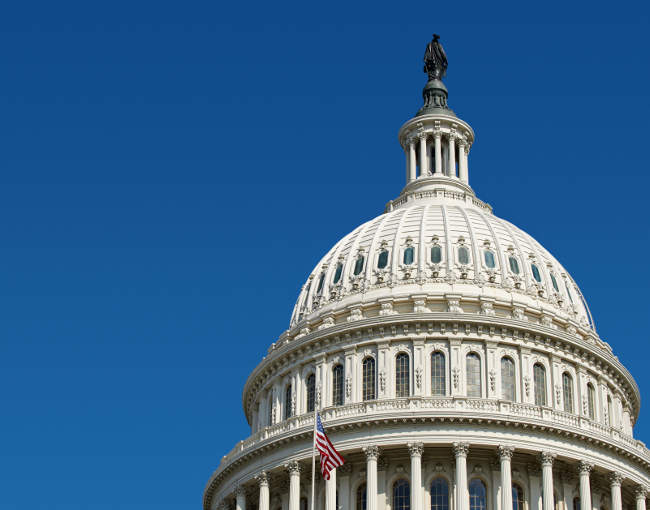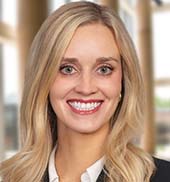In our first blog post concerning the CARES Act and higher education, we focused on those provisions specifically designed to provide relief to postsecondary institutions and borrowers. As a follow-up, we provide below a brief overview of provisions that, while not designed specifically for higher education, are nonetheless relevant to institutions in their roles as businesses and employers, and which may provide opportunities for economic relief. Of course, we do not address every provision of the Act that might possibly be of interest to a college or university. But we do attempt to highlight those elements of the Act that, though not specifically designated for higher education, we believe institutions will want to consider.
As you would expect, our understanding of the Act and how it will be implemented is changing daily based on the guidance being promulgated, both formally and informally. We will attempt to provide further updates as significant insight becomes available. Institutions should consult with their own counsel regarding the application of this legislation to their specific college or university. In addition, institutions with questions regarding the CARES Act are welcome to contact the authors of this blog post using the information at the end of the article.
Paycheck Protection Program
Overview
Included in the CARES Act is $349 billion for Small Business Administration forgivable loans under Section 7(a) of the Small Business Act. Businesses or non-profits (501(c)(3)) with less than 500 employees, or the applicable size standard for the industry, can apply for a loan through June 30, 2020. If an institution of higher education is deemed to have an “Affiliation,” it may need to aggregate the number of employees between the institution and any affiliate(s) to determine its total number. An Affiliation exists when one entity controls or has the power to control another or when a third party (or parties) controls or has the power to control both entities. Determining whether an Affiliation exists is a fact intensive analysis.
The Paycheck Protection Program loan is capped at the lesser of $10 million and 2.5 times the average monthly payroll costs incurred in the one-year period before the date of the loan. No personal guarantee or collateral is required for the loan and the interest rate is capped at 4%.
The loan may be used for payroll costs, costs related to the continuation of group health care benefits, salaries, payments of mortgage interest, rent, utilities and debt obligations that were incurred before February 15, 2020. Generally, part or all of the loan may be forgiven if the business or non-profit maintains its payroll at normal levels with no federal tax consequences.
What we know
The Small Business Administration has issued an interim final rule for the Paycheck Protection Program. Institutions can apply here starting April 3, 2020. The Department of Treasury encourages applications to be sent in as quickly as possible because there is a funding cap. Institutions of higher education looking to apply should contact their relationship bank.
Economic Injury Disaster Loan
Overview
The CARES Act allocates $10 billion and expands the existing Economic Injury Disaster Loans (EIDLs) program. EIDL loans offer up to $2 million that may be used to pay fixed debts, payroll, accounts payable and other bills that cannot be paid because of the disaster’s impact. The interest rate for EIDL loans is 3.75% for small businesses and 2.75% for nonprofits, and the maximum loan term is 30 years. There are no loan forgiveness provisions for EIDLs.
For-profit institutions of higher education with not more than 500 employees, subject to SBA affiliation rules, are eligible for EIDL loans. There is no cap on the amount of employees for most private non-profit organizations.
Eligible institutions may also receive a $10,000 emergency grant cash advance if their EIDL application is related to COVID-19. Emergency cash grants can be used for paid leave, maintaining payroll, increased costs due to supply chain disruption, making rent or mortgage payments or repaying obligations that cannot be met due to revenue losses, and generally will be available within three days of application. The institution may not be required to repay the cash advance.
What we know
The Economic Injury Disaster Loan Application is available. Institutions of higher education looking to apply should contact their relationship bank as soon as possible. Institutions should also note that they may apply for and receive both an EIDL loan and a Paycheck Protection Program loan, but the loans cannot be used for the same purpose.
What we don’t know
We are awaiting implementing regulations from the Administrator of the Small Business Administration, which must be issued within 15 days of enactment of the CARES Act. It also is unclear how long it will take to process EIDL loans and for businesses to receive any funds.
Extra credit
For additional information about EIDL Loans and links to applicable forms, see the following Thompson Coburn blog post: Economic relief opportunities for small businesses during COVID-19.
Assistance for mid-sized businesses
The CARES Act allocated $454 billion in loans to businesses and nonprofits with 500 to 10,000 employees. Such loans are made at 2% interest with no principal or interest due for at least the first six months. The borrower must make a number of good faith certifications, including a certification that loan proceeds will be used to retain 90% of workforce at full compensation until September 30, 2020 and limits on executive compensation. There are no forgiveness provisions for these loans.
What we know
For institutions unable to take advantage of a Small Business Administration program, this loan may be a good option.
What we don’t know
We are waiting for the Secretary of the Treasury to publish procedures for applications and minimum requirements for a loan. Per the CARES Act, these procedures must be published as soon as practicable, but in no case later than 10 days after enactment of the Act.
Tax relief
Thompson Coburn’s Tax Practice has authored an analysis of the CARES Act’s key tax provisions: Key tax provisions in the CARES Act. Important elements include an employee retention payroll tax credit and the deferral of employer payroll taxes.
Extra credit
The IRS also has published an FAQ related to COVID-19 related tax credits.
Charitable giving
The CARES Act also contains provisions to encourage charitable giving. For an overview of those provisions, we encourage institutions to review the following Thompson Coburn blog post: CARES Act implications for charitable giving during COVID-19.
Aaron Lacey is the leader of Thompson Coburn’s Higher Education practice, host of the Firm’s popular Higher Education Webinar Series, and editorial director of REGucation, the Firm’s higher education law and policy blog. Chris Murray is the co-chair of Thompson Coburn’s Lobbying & Policy practice group, and has been recognized for the depth of his knowledge of education policy, which spans all corners of education, from pre-K through primary, secondary, and postsecondary, from institutions and trade associations to technology companies and investors. Scott Goldschmidt is the former Deputy General Counsel for a prominent institution of higher education, and a member of the firm’s Higher Education practice.
Click here to subscribe to News & Insights from Thompson Coburn related to our practices as well as the latest on COVID-19 issues.


















